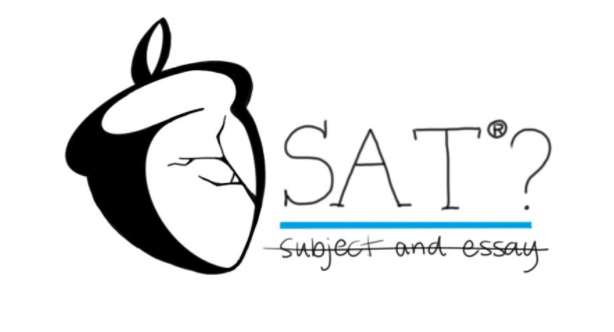SAT Updates Format in Desperate Ploy to Maintain Relevance
March 8, 2022
In January, College Board announced a new digital SAT format starting for the class of 2025. The test will only last two hours in comparison to the current test of three plus hours. The test questions will also be adaptive; with each student’s answers to questions determining the level of difficulty in the questions they receive next. Each student will not be taking the same test, an attempt to address concerns around security of this new online option. The update is effectively an attempt to make a regressive, inequitable, cumbersome exam a little less draconian. However, this repackaging of a deeply problematic product should not obscure College Board’s true objective: to continue to extort students. That means making a few concessions to keep the SAT relevant in a time when it has never been more in question on the national stage.
It is no secret that SAT and other standardized test scores are closely related to wealth.With public opinion on the tests souring and the arrival of the global pandemic, nearly 80 percent of colleges did not require standardized test scores for fall 2022. At least 1,400 of them extended the policy through fall 2023, and the University of California (UC) schools declared that they will no longer consider SAT or ACT test scores at all when making admissions decisions. Applications from first-generation students increased by 20 percent since last year at selective private universities, as did applications from students who received an application fee waiver (up 22 percent) and students from underrepresented minority groups (up 24 percent). The test’s optional policies translated to a 10 to 12 percent increase in enrollment by underrepresented minorities; a 6 to 8 percent increase by women and a 3 to 4 percent increase by Pell Grant recipients (limited to students with financial need) enrolled in schools. Clearly, when universities go test-optional, it benefits underrepresented demographics of students. So, to make college admissions even a modicum more equitable, testing should be done away with altogether.
However, this shift is hardly profitable for the College Board. Test takers have declined from 2.2 million in 2020 to only 1.5 million members of the class of 2021, and if universities continue with the current trend regarding the SAT, those numbers will only continue to drop. This “kinder” exam is an act of desperation to win back students and universities at the expense of a more equitable admissions process. Plus, a digital exam is far cheaper to administer. If the College Board were truly invested in the well-being of students, making the test free to take and send (as of now the standard version costs 52 dollars), and making free study materials widely available could be a start. The College Board’s performative posturing illustrates exactly where its true priorities lie: extending the life span of its standardized test cash cow, and forcing students to adjust to its curveballs in the process.









